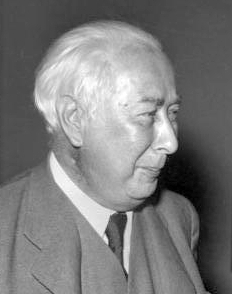
Theodor Heuss was a German liberal politician who served as the first president of West Germany from 1949 to 1959. His cordial nature – something of a contrast to the stern character of chancellor Konrad Adenauer – largely contributed to the stabilization of democracy in West Germany during the Wirtschaftswunder years. Before beginning his career as a politician, Heuss had been a political journalist.

Borgo is the 14th rione of Rome, Italy. It is identified by the initials R. XIV and is included within Municipio I.
Campo santo is a word for cemetery in Italian and Spanish and may refer to:

Emanuela Orlandi was a Vatican teenager who mysteriously disappeared while returning home from music school in Rome on 22 June 1983. The case received worldwide attention due to the public appeal of Pope John Paul II for her release after an unnamed terrorist organisation claimed to be holding the girl in exchange for the liberation of Mehmet Ali Ağca, the Turkish terrorist who two years before attempted to assassinate the Pope. However, the subsequent investigation discovered that the allegation of international terrorism was a misdirection, and the real motive of the disappearance remains unknown.
Purgatorial societies are Roman Catholic Church associations or confraternities which aim to assist souls in purgatory reach heaven. The doctrine concerning purgatory, the condition of the poor souls after death, the communion of saints, and the satisfactory value of our good works form the basis of these associations.

The Via Giulia is a street of historical and architectural importance in Rome, Italy, which runs along the left (east) bank of the Tiber from Piazza San Vincenzo Pallotti, near Ponte Sisto, to Piazza dell'Oro. It is about 1 kilometre long and connects the Regola and Ponte Rioni.

Santa Maria dell'Anima is a church in central Rome, Italy, just west of the Piazza Navona and near the Santa Maria della Pace church. It was founded during the course of the 14th century by Dutch merchants, who at that time belonged to the Holy Roman Empire. In the course of the 15th century, it became the national church of the whole Holy Roman Empire in Rome and henceforth the so-called German national church and hospice of German-speaking people in Rome. In some sources this institution is called Austrian since Habsburg emperors were its protectors.

Charitable institutions attached to churches in Rome were founded right through the medieval period and included hospitals, hostels, and others providing assistance to pilgrims to Rome from a certain "nation", which thus became these nations' national churches in Rome. These institutions were generally organized as confraternities and funded through charity and legacies from rich benefactors belonging to that "nation". Often, they were also connected to national scholæ, where the clergymen of that nation were trained. The churches and their riches were a sign of the importance of their nation and of the prelates that supported them. Up to 1870 and Italian unification, these national churches also included churches of the Italian states.
San Bernardo della Compagnia was a small church in Rome, next to Trajan's Column, dedicated to Saint Bernard and the Virgin Mary.
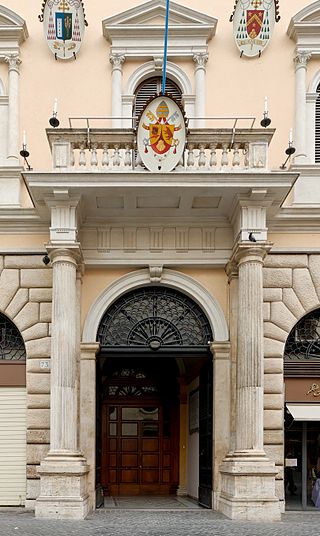
The Roman Colleges, also referred to as the Pontifical Colleges in Rome, are institutions established and maintained in Rome for the education of future ecclesiastics of the Catholic Church. Traditionally many were for students of a particular nationality. The colleges are halls of residence in which the students follow the usual seminary exercises of piety, study in private, and review the subjects treated in class. In some colleges there are special courses of instruction but the regular courses in philosophy and theology are given in a few large central institutions, such as Pontifical Urbaniana University, the Pontifical Gregorian University, the Pontifical Lateran University, and the Pontifical University of Saint Thomas Aquinas, Angelicum.

The Collegio Teutonico, historically often referred to by its Latin name Collegium Germanicum, is one of the Pontifical Colleges of Rome. The German College is the Pontifical College established for future ecclesiastics of German nationality. It is divided into two separate colleges; the Pontificio Collegio Teutonico di S. Maria dell’ Anima and the Collegio Teutonico del Campo Santo.
Johannes Quasten was a German Roman Catholic theologian and scholar of patristics.
This is an index of Vatican City–related topics.

Duchess Charlotte Frederica of Mecklenburg-Schwerin, was the first wife of Christian VIII from 1806 until 1810, before he became King of Norway and later King of Denmark. She was a daughter of Frederick Francis I, Grand Duke of Mecklenburg-Schwerin, and Princess Louise of Saxe-Gotha-Altenburg.

The Church of St. Julian of the Flemings is a Roman Catholic church dedicated to Saint Julian the Hospitaller, located in Rome, Italy. Historically, the church has been the National Church in Rome of the Southern Netherlands and, in 1830, became the national church of the Kingdom of Belgium.
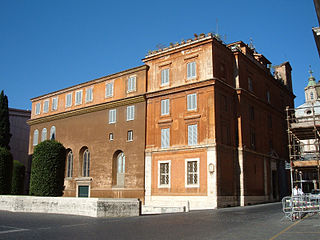
The Church of Our Lady of Mercy in the Teutonic Cemetery is a Roman Catholic church in the rione Borgo of Rome, Italy. It is located on the Via della Sagrestia.

The Church of San Pellegrino in Vaticano is an ancient Roman Catholic oratory in the Vatican City, located on the Via dei Pellegrini. The church is dedicated to Saint Peregrine of Auxerre, a Roman priest appointed by Pope Sixtus II who had suffered martyrdom in Gaul in the third century. It is one of the oldest churches in the Vatican City.
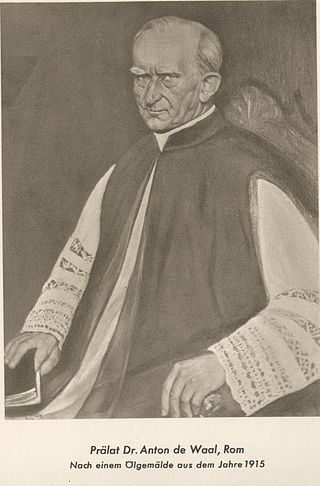
Anton Joseph Johann Maria de Waal was a German Christian archeologist and Roman Catholic church historian. He established the Collegio Teutonico del Campo Santo and carried out numerous archeological excavations in Rome.

Hans-Peter Fischer is a German Catholic priest. He is Prelate Auditor of the Apostolic Tribunal of the Roman Rota since 2017. From 2010 to 2022 he served as rector of the Archconfraternity of Our Lady of Sorrows of the Germans and the Flemish in the Vatican and as rector of the Pontifical Teutonic College of Santa Maria in Campo Santo.
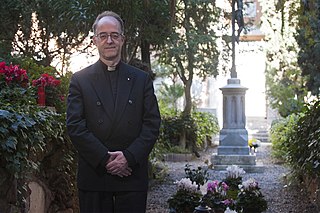
Stefan Heid is a German Catholic priest, church historian and Christian archaeologist. Since 2020 he is rector of the Pontifical Institute of Christian Archeology. Heid is also since 2011 director of the Roman Institute of the Görres-Society.

















